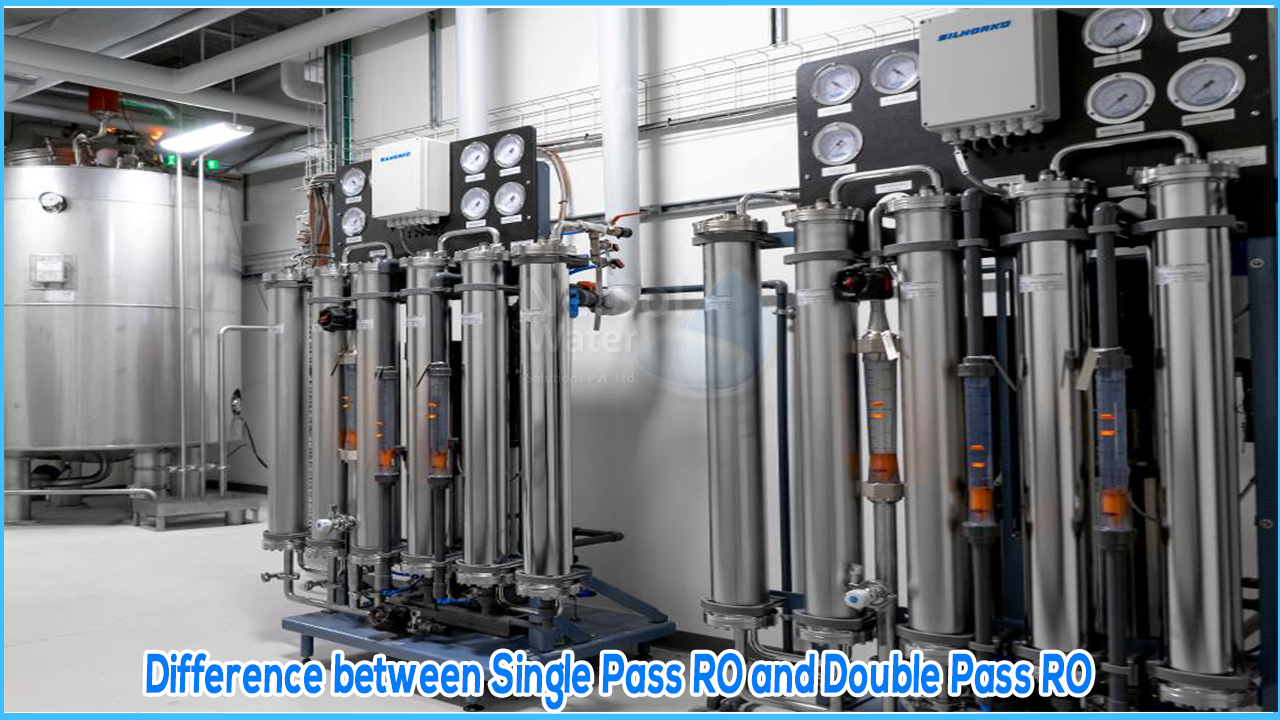WHAT IS A RO?
A RO is a water purification technique employed all over the world in all kinds of settings like domestic, commercial and industrial. This method gives us purified water that is potable and tastes good, moreover it has become an inevitable part of daily life as its healthier option. Instead of drinking tap water, Ro treated water is preferred over it. But, RO has a disadvantage as it’s permeate is wasted generally. To reduce the wastage a double pass RO system is used.
WHAT IS A SINGLE PASS RO?
A pass is said to be a stand alone reverse osmosis plant. A single pass RO is a stand alone plant. Each round of an RO system typically consists of two stages. Occasionally three can be used. In the case of a one-pass RO with fresh water supply, the water passes through a first stage in which approximately 50% flows through the RO membranes and is purified into a so-called permeate. The remaining 50%, called rejection is fed to the second stage, where in turn about half is purified into permeate. Thus, approximately 75% of the original makeup becomes permeate. (This percentage may vary a bit depending on the quality of the makeup). The remaining 25% of waste is a waste stream that must be disposed of. (In systems with cooling towers, this stream is often directed to the cooling tower reservoir.) A single pass reverse osmosis unit can remove more than 99% of the ions from the composition.
WHAT IS A DOUBLE PASS RO?
Two-pass reverse osmosis systems consist of two reverse osmosis systems (1st pass and 2nd pass) with the 1st pass having a higher volumetric flow capacity than the 2nd pass. In the middle, there must be a rupture tank in which the permeate or concentrated water from the first RO step is stored and fed to the second step for subsequent filtration. In the case of water recovery, pre-treatment is required for both the 1st-pass and 2nd-pass RO systems, as the quality of the concentrated water in the 1st pass must approach the saturation point. On the other hand, an application may only require one pass pre-treatment when used as a permeate to feed the second pass.
WHY DO WE NEED A DOUBLE PASS RO OVER SINGLE PASS RO?
To minimize water waste, a double pass system is recommended. By using a double pass system, the water that would be removed as wastewater is recirculated through the semi-permeable membrane.
Using a double pass system can dramatically reduce water waste. Average water waste in a single pass system is 20-25%. This drops dramatically when using a double pass system, up to 5%. A double pass system would be particularly useful for industrial use where companies would have to pay not only for the water that enters the factory, but also for the wastewater that leaves.



